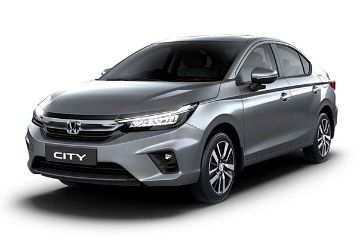![Wuling Hongguang Mini EV crash tested - How safe is it in a head-on collision? 01]()
Back in 2021, the Institute of Car Collision Safety, operating under the China Traffic Safety Administration, conducted a safety test for the Wuling Hongguang Mini EV by putting it in an overlap crash test with another micro-EV named Jiakuma JKM-G1 (since it looks like a mini G-Wagen here, we’ll call it the Mini G).
As per the institute's information, the Wuling Hongguang Mini EV is constructed with a high-strength steel and weighs 560 kg, while the Mini G weighs 568 kg.
During the test, the Mini G suffered severe damage, with the front of the vehicle crushed and the front seats almost completely flattened. In a real crash, the occupants in the front row would have minimal chances of survival.
![Wuling Hongguang Mini EV crash tested - How safe is it in a head-on collision? 01]()
In contrast, the Mini EV, with a force-absorbing chassis design, exhibited less damage to the front end without major deformation to the chassis. While the impact made it challenging to open the doors, the A-pillars remained intact albeit dented by the impact.
The battery pack appeared undamaged and there were no signs of electrolyte leakage, pointing to a lower risk of an ignition.
![Wuling Hongguang Mini EV crash tested - How safe is it in a head-on collision? 02]()
The assessment indicates that in a real-life collision between the two micro EVs, the driver of the Mini EV would still have a chance of survival, albeit with potential leg and head injuries due to the absence of airbags.
However, it's important to note that this was a test conducted between two microcars. In the event of a collision involving the Mini EV with a regular vehicle, the consequences could be significantly more tragic.
![Wuling Hongguang Mini EV crash tested - How safe is it in a head-on collision? 03]()
Case in point, a traffic accident that happened in Hebei, China in April 2021. It was reported that the collision occurred when a B8-generation Audi A4L crossed into the oncoming lane and crashed into the Mini EV.
![Wuling Hongguang Mini EV crash tested - How safe is it in a head-on collision? 04]()
The captured image reveals extensive damage to the front end of the Mini EV, with a notable bending of the A-pillar. A mother and her daughter in the Mini EV tragically lost their lives, while occupants in the A4L survived with injuries.
![Wuling Hongguang Mini EV crash tested - How safe is it in a head-on collision? 05]()
Heavier vehicles possess higher momentum, which consequently leads to the generation of increased force. In the event of a head-on collision between two cars, the heavier vehicle would have a higher likelihood of withstanding the impact.
So while the Wuling Hongguang Mini EV has shown to be safer than its similar-sized peer, it can’t defy physics.
![Wuling Hongguang Mini EV crash tested - How safe is it in a head-on collision? 06]()
In more recent news, the Wuling Hongguang Mini EV has been superseded by the Wuling Air. Wuling’s Thai distributor EV Primus has announced that it is planning to expand to the Philippines and Malaysia in 2024.
Image credit: DongCheDi
Also read: Thai distributor EV Primus announces plans to launch Wuling Air in Malaysia in 2024














